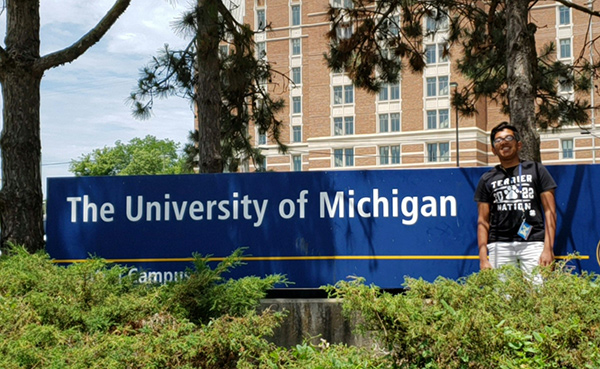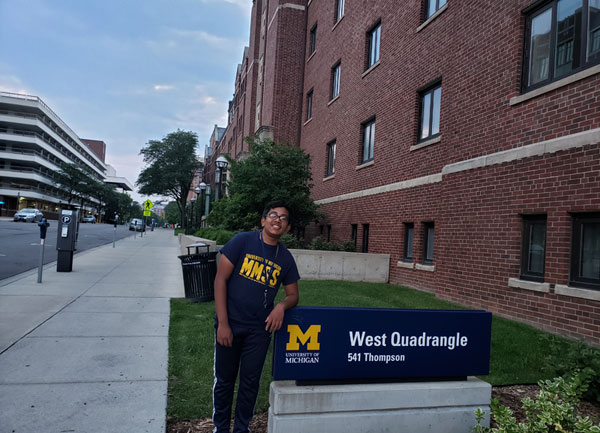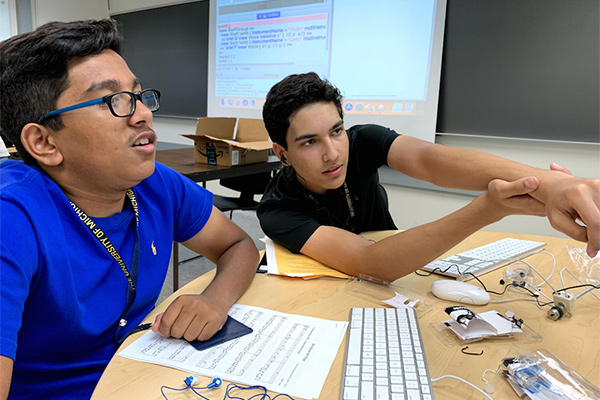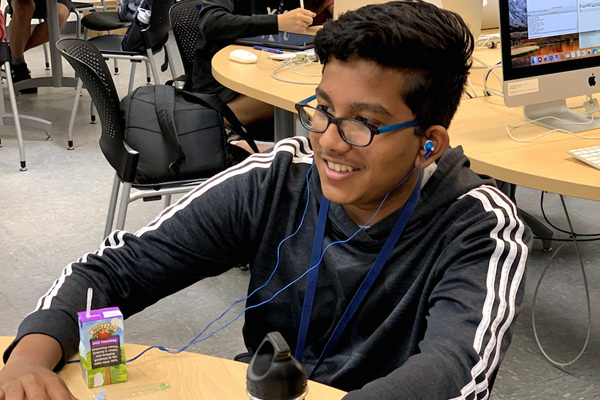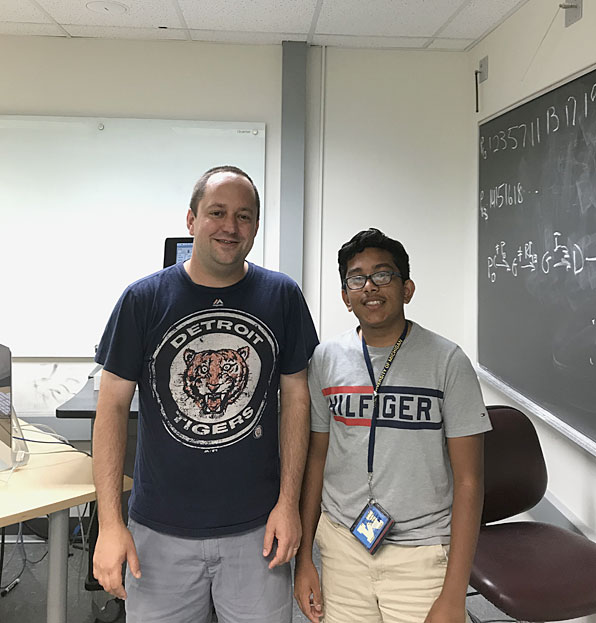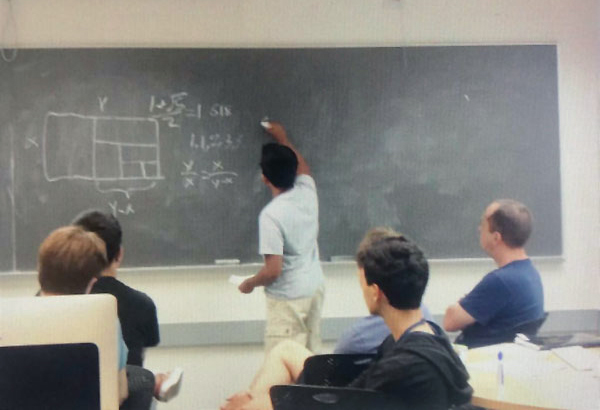by Arkaprabha Kolay
This summer, I attended the Michigan Math and Science Scholars (MMSS) program with the support of the “Garwin Family Foundation” at the University of Michigan, Ann Arbor and took the class “Math and Music Theory”. My course focused on understanding math and music theory and how they correlate with each other.
A Day in Class
Every day, my classes were from 9:00 a.m. to 12:00 noon and again from 1:30 p.m. to 4:30 p.m. in the Math Department building. The Mathematics department was about a half mile walk so every day I got to look around and explore the campus a little bit. During the morning hours, we usually got lectures and took notes in a classroom, while in the afternoon we would go to the basement for the lab and work on assignments. Those assignments ranged from solving a problem we learned in the morning to composing some music using patterns such as inversion, counterpoint, and hexatonic scales.
I loved going to the classes every day. It was an opportunity to learn something new and interesting which isn’t taught in regular high schools. During the first week, we learned the basics of math and music theory separately before diving into how they’re related in the second week. I learned about sets, groups, binary operations, order, different scales, and fugues, a piece of counterpoint with a math theme. In the second week we got a chance to see how these two completely different ideas of math and music relate to each other. What we learned was that math is the fundamental groundwork for music, and with any math theory one can create many different types of music. I was amazed to see the number of possible ways that it could be done.
Each day, there was something new and interesting, but the thing I found most fascinating was a small section we did called “Graph Theory”. I found this interesting because of Leonard Euler’s work (the main creator of graph theory) looking at hexatonic scales and the graphical patterns in them. Also, I was intrigued by the 4 color theorem which states that any map can be colored with only 4 colors with no edges crossing or adjacent sides. We can do so many things with graphs that I have never imagined before this class. For example, we can create whole pieces of music using a rule of Euler’s Tonnetz which is a tone network.
My Professor, Dr. Lon Mitchell also took our class to the clock tower in the campus one day after our lecture in the morning so we could listen to the pattern the bells ring when the clock strikes every hour. Dr. Mitchell even told us that some days in the summer, there would be people who would play songs, but we missed them. Even so, it was a nice experience to go to the top and listen to the enormous bells.
On the last day of class, every student had to present a topic that they have found interesting or create a piece of music for their final project. My final project was on the relation between the Fibonacci Sequence and the Golden Ratio of music. I found that they are related because if you rearrange the formulas they use, you come up with the exact same one, meaning they are identical. I also found that if you take the Fibonacci sequence and divide it by the same thing except starting at 0 instead of 1 this time, the answer would get closer and closer to the Golden Ratio which is 1.618…. It would be accurate up to 15 decimal places.
Outside the Classroom
When I wasn’t in a classroom learning, I was having fun with my friends I made in this program at Ann Arbor. The MMSS program had many afternoon activities everyday ranging from going to the mall, outdoor concerts, and even playing many sports/games. All that the students had to do was sign up for whatever event and just go with counselors. I also made many new friends who loved to be there as much as I did. A couple of us played a fun mobile game to challenge each other to see who was the best. Those students are super hardworking and intelligent and I hope we all will keep in touch.
During the weekend, I went to the Michigan Math and Science Center and the Detroit Institute of Art. The paintings as the Art Institute consisted of drawing from many eras and cultures such as, Modern, Contemporary, European, African, Asian, and even Egyptian art. There was also a gift store and restaurant inside the building which was great.
For this MMSS program there were kids from 24 states and 31 countries around the world such as China, India, and Australia. That was really interesting because I got to interact with kids from all those different cultures. My roommate was from China. I liked staying with an international student because it was something I had never experienced before.
My counselors, Ben and Greg, supervised us in our hallway every day. We had to do check-ins with them after class and late night bed checks. If we didn’t have any strikes (consequence if we didn’t follow a rule) we would get a surprise. The last day of my stay, I didn’t have any strikes, so the surprise was a bag of chocolate covered Oreos from a place called Kilwins, and they were so delicious! The food there was also appetizing. Everyday there was a great variety of food in buffet style ranging from American food to Chinese food to Mediterranean food.
Overall Thoughts
Before going to MMSS, I had never gone to a STEM program or, summer camp or, experienced a place that I would go away from home to learn. I really liked going to the program and meeting new people almost every day. Being there at the program made me a little more responsible and independent.
I finally understand most of the relation between math and music theory and how those two completely different subjects are related. This program has shown me the potential I have and how much more I could apply these things in my life. My teacher and his assistants gave me things that I will always remember.
Finally, I would like to thank the “Garwin Family Foundation” for allowing me to explore my interests and enrolling me in this program with a topic I was really interested, and for giving me this amazing opportunity at the University of Michigan, Ann Arbor.


